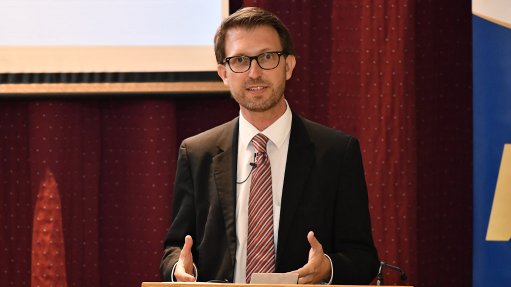
Dr Tobias Bischof-Niemz
Photo by: Dylan Slater
That Eskom needs to be restructured is no longer in question. In its current form, the organisation poses a systemic risk to the South African economy and is ‘too big to fail’. The real question is what form this restructuring should take. For sure, the generation assets need to be separated from the transmission system operator (TSO) and from the distribution unit. But is that enough? Can the generation assets be kept in one legal entity? There is the risk, for instance, that the animal instincts of the separate board and executive team presiding over a 40 GW-plus behemoth could prove impossible to tame. In the absence of the moderating influence of Eskom’s prevailing unified leadership structure, the generation tail could truly end up wagging the power-system dog and undermining both the TSO and the regulator.
South Africa has to enter any restructuring with its eyes wide open and in the full knowledge that, while vertical separation is a necessary ingredient for future sustainability, on its own it is insufficient to deliver stable and affordable electricity at predictable tariffs. To fully de-risk Eskom, while also ensuring full alignment with South Africa’s economic objectives and its environmental commitments, the unbundling process should seek to entirely remove the too-big-to-fail hazard. Likewise, it should seek to strengthen the position of the regulator’s ability to transparently determine the prudent and efficient costs of the legacy coal fleet, while repositioning the TSO as the conductor of the future power system.
One way of achieving these multiple objectives is to break the generation business into several independent generation companies (GenCos). On their own, these entities should be too small, at say not more than 20% of overall coal-based electricity generation, to pose any systemic risk to the electricity system or the economy. Each new GenCo would have its own board and executive team and would be expected to compete on the basis of efficient operations. The GenCos would be compensated on output, as measured by the amount of energy they produce and the reliable capacity they provide, rather than the cost of their inputs. Such an approach diverges materially from the current compensation model, whereby the tariff is derived using an allowable revenue formula based on input costs incurred, such as coal, depreciation, operational expenditure and a return on assets.
To prevent perverse incentives that could result in the operating life spans of polluting and carbon-intensive coal-fired power stations being extended, each GenCo would be allocated a maximum residual terra-watt-hour (TWh) budget to 2040. This budget, which includes energy and capacity, would be dis- aggregated down to the level of yearly budgets and would be an input into the Integrated Resource Plan.
Each GenCo should be permitted to optimise the way they deliver on their TWh envelopes, within the boundary condition that new coal builds are disallowed. Some of the GenCos may hence choose to lower costs by accelerating the phase-out of certain units in favour of cheaper solar and wind generators, while meeting their firm capacity obligations through new investments in battery energy storage, pumped hydro or gas-fired plants.
Further, trading of TWh budgets between the GenCos could be allowed, where only non-coal TWh can be traded for coal-TWh. In other words, GenCo A sells part of its coal-TWh budget to GenCo B; GenCo A’s TWh envelope reduces and GenCo B is allowed to produce and sell more TWhs, but the new TWhs acquired cannot be coal. Such a scenario would make every trade transaction efficient by lowering the overall cost, while also reducing the coal-exposure further to below the overall coal-TWh budget.
Outside the TWh budgets to 2040, the GenCos should be allowed to compete freely against, or in partnership with, independent power producers in auctions for new capacity in line with frequently updated IRP allocations.
Surgical precision will be required in the implementation, particularly in setting parameters for the residual TWh budgets. But without splitting the Eskom generation fleet into several entities and transitioning the compensation away from cost-plus compensation (reimbursement of prudently and efficiently incurred input costs) to performance-based compensation (payment for energy and capacity outputs), there will be a huge incentive, and the institutional muscle, to resist a controlled shutdown of the coal fleet.
It goes without saying that expert planning and diligent execution will be critical to achieving these multiple objectives while still keeping the lights on. South Africa should, however, not waste the current financial and operational crisis at Eskom, but use it to make the structure of the energy supply industry fit for purpose – again.